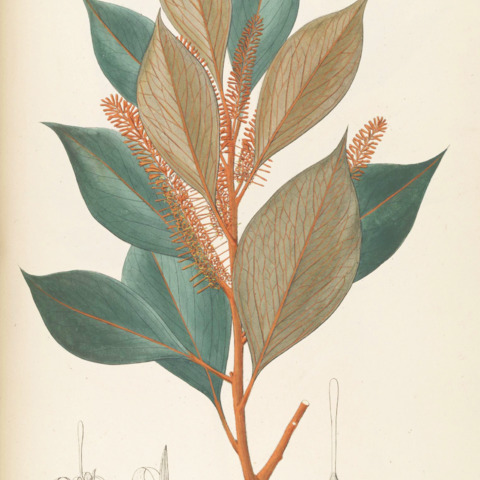Shrubs, or trees to 25 m; young branches densely hairy, rarely glabrous, glabrescent, lenticellate (occasionally lenticels absent). Leaves spirally arranged, chartaceous to rigidly coriaceous, long to short petiolate, heterophyllous, compound or pinnatisect when juvenile and sometimes in fertile/ adult state, adult leaves generally simple, glabrous to densely tomentose, quickly glabrescent above, glabrescent or persistent beneath, hairs erect or appressed, whitish or yellowish to ferrugineous or rufous. Compound leaves imparipinnate; leaflets 2-15 pairs, sessile to short-petiolate, asymmetrical, opposite or alternate, margin serrate, rarely entire. Simple leaves short-to long-petiolate, shape various, margin entire to strongly serrate, revolute or not; venation conspicuous to obscure, plane to slightly raised above, generally more prominent beneath, eucamptodromous to semicraspedodromous, occasionally brochidodromous, tertiary venation reticulate, midvein usually reaching leaflet apex. Inflorescences unbranched, pseudo-racemose, axillary or terminal, generally solitary, glabrous to densely tomentose or velutinous; flower-pair axis (peduncle) absent, rarely present; common bracts subtending flower-pairs caducous; flowers pedicellate. Flower buds elongate or elongate-pyriform, opening apically by elongation of style. Flowers actinomorphic; all tepals recurving at right angles at anthesis, glabrous to densely tomentose outside, glabrous within; filaments adnate to perianth to different degrees, generally almost entirely fused, free part ribbon-like, anthers linear to oblong; hypogynous glands 4, fleshy or scale-like, well separated, sometimes fused at base or rarely appearing as a continuous ring; ovary subsessile, glabrous to densely pubescent, sometimes flattened longitudinally and weakly keeled, style erect, claviform, stigma an apical slit, ovules 2, orthotropous, pendulous. Fruit a 1-2-seeded follicle, longitudinally flattened, commonly constricted at base and apex, apex sharp and straight, or strongly curved towards unsutured side, style occasionally persistent; seeds compressed, winged, seed central to wing.
More
Shrubs or trees. Leaves alternate, heteromorphic, simple or pinnately com-pound, dentate to entire, petiolate. Inflorescence spikes or racemes, axillary or terminal. Flowers bisexual, actinomorphic. Tepals free. Stamens inserted at about the middle of the perianth, the anthers oblong-linear, subsessile to sessile, connective sometimes broadly but briefly produced. Disc of 4 hypogynous glands. Ovary with 2 pendulous ovules, the stigma terminal. Fruit a follicle, obliquely 2-valved, with 2 winged seeds.

